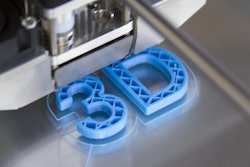
From original sourcing to final product delivery, supply chains explore every part of the "Point A to Point B" of goods, making them susceptible to various risks and disruptions. Challenges like natural disasters and unexpected demand can significantly impact businesses. By implementing robust risk management strategies and technologies, organizations can navigate uncertainty as it comes, and ensure stability.
Understanding risk management today
Risk management involves identifying potential threats and assessing their impact to develop strategies that mitigate or respond to them effectively. It's about being proactive rather than reactive, anticipating potential disruptions and having contingency plans in place.
The modern supply chain is composed of an intricate network, involving numerous stakeholders, making it challenging to identify and address all potential risks. Couple that with the movement of cold goods and perishable foods, the opportunity to falter is ever looming.
When managing fleets for example, technology and analytics become key from the start of hiring drivers.
Hadley Benton, EVP of business development at Fleet Advantage, explains the use of post-hire monitoring through a scoring system, which serves as a proactive approach to risk reduction.
"Event-based scoring systems, automation, and reporting are crucial components for risk managers, where a telematics system should capture some of the most common events fleets use for scoring. This includes speed, harsh breaking, harsh acceleration, harsh cornering, and seat belt usage. It’s important to decide how to score and weigh each event for your overall risk profile of a driver. Furthermore, the driver’s collision history should also be considered and incorporated into the scorecard, especially since at fault collisions can be a key indicator of future risk," says Benton.
There is a natural lack of visibility across the supply chain in general, as the moving (literally) parts lead to blind spots, making it difficult to anticipate and mitigate risks effectively. This is where the boom in visibility technologies take center stage. A supply chain today is really only as strong as its collaboration between technology integration and the minds that work to turn those features into actionable items.
Harnessing risk management tools
Leveraging big data like artificial intelligence (AI) and machine learning (ML) algorithms, predictive analytics has the power to forecast potential risks based on historical data, enabling proactive decision-making. Cloud-based platforms also provide real-time visibility into the entire supply chain, allowing businesses to track inventory levels, monitor supplier performance and identify potential disruptions or bottlenecks.
Elliott Wolf, VP and chief data scientist at Lineage, says one option is through automated tracking systems in food.
"Traditionally, the process of checking for damaged food has never been an exact science. Using proprietary computer vision, the Lineage Eye, for example, automates many steps of the receiving process, including inbound pallet sizing, case counting, SKU and lot determination, and can answer questions such as 'What item is this and when does it expire?' Humans traditionally catalog inbound inventory to capture the headline data which takes labor and requires space," explains Wolf.
Are you tired of navigating the chilly waters of cold chain logistics blindfolded?
Take this survey to help us better understand your industry needs.
Additionally, blockchain has the power to enhance transparency and traceability by creating records of transactions, reducing the risk of fraud and counterfeit products. Last year UNISOT utilized blockchain in a Digital Product Passport (DPP) to provide information such as raw materials, components, manufacturing locations, cold chain integrity, accreditation, certifications, carbon footprint and waste recycling to both manufacturers and end users.
“We felt the time was right to offer a blockchain solution to the food industry to help them verify products entering the consumer market. Food suppliers need to demonstrate transparency across the global supply chain via a standardized system to track and authenticate products. Manufacturers and consumers have been demanding this for years, with the DPP facilitating the ability to simply scan a label and view data via the application,” says Stephan Nilsson, co-founder of UNISOT.
 Risks monitored through data and analytics.tippapatt/stock.adobe.com
Risks monitored through data and analytics.tippapatt/stock.adobe.com
Geoff Coltman, VP of Catena Solutions, says a well-designed data management process addresses obstacles and can provide businesses the competitive edge and agility to be resilient even under trying circumstances.
"With real-time facts and figures at their fingertips, company leaders can make quick, informed decisions, respond to the pressures of supply chain uncertainty and volatility, limit disruption and mitigate risks," explains Coltman.
By embracing technology and adopting proactive practices against risks, businesses can enhance the stability of their supply chains in the face of most obstacles. While challenges will always be there, those who prioritize risk management will be better prepared to move the needle when the inevitable disruption comes to pass.




















